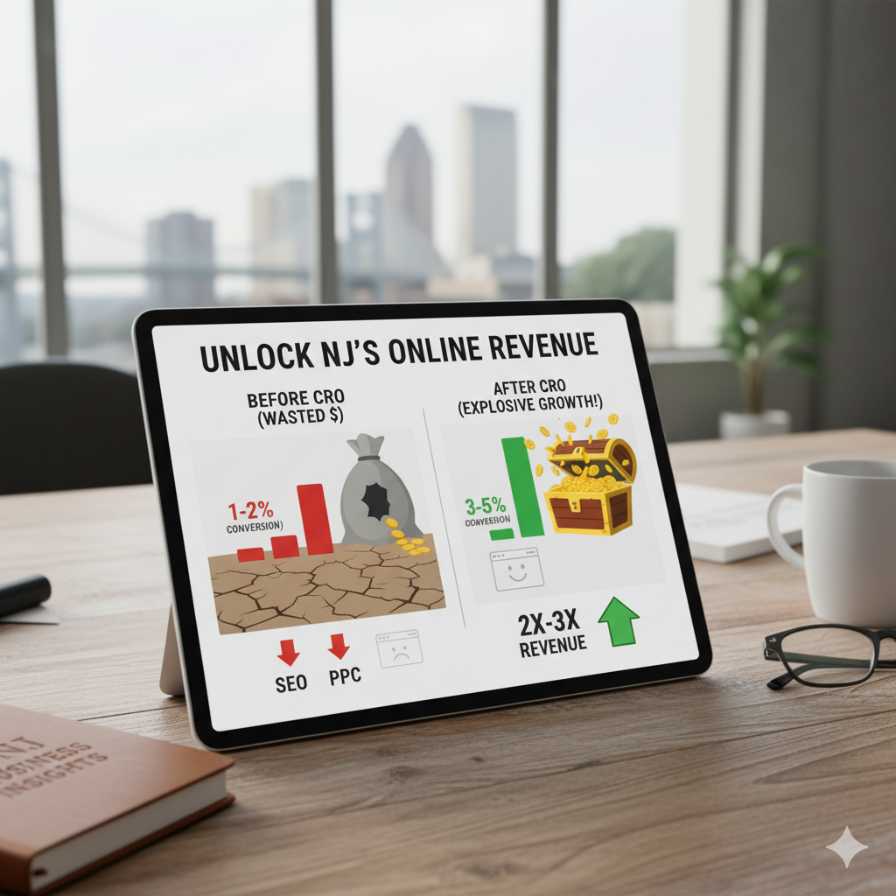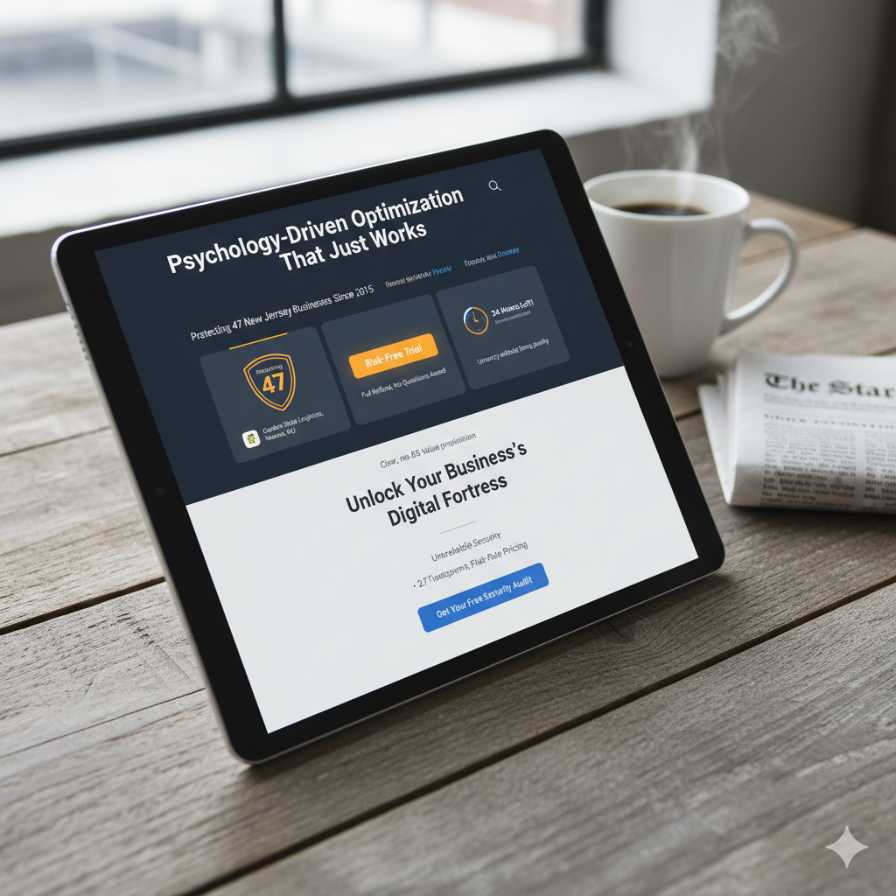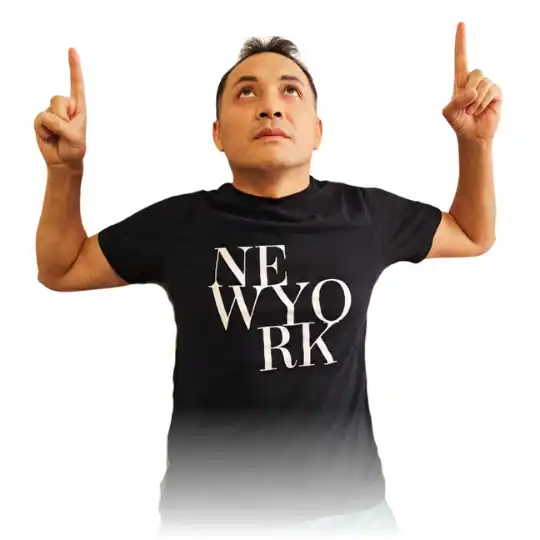What Is Conversion Rate Optimization and Why Should New Jersey Businesses Care About Their Website Performance?
Conversion Rate Optimization (CRO) is the systematic process of increasing the percentage of website visitors who complete a desired action—whether that’s making a purchase, filling out a contact form, or downloading a resource. For New Jersey businesses, CRO represents the difference between a website that merely exists and one that actively drives revenue growth.

I’ve been working with NJ businesses for years, and here’s what I see constantly: companies pour money into SEO and PPC to drive traffic, but their websites convert at embarrassing rates. We’re talking 1-2% when they could easily hit 3-5% with the right tweaks. That’s literally doubling or tripling revenue without spending another dime on ads.
The Real Cost of Ignoring Website Optimization in the Garden State
Let me paint you a picture. A client in Morristown was spending $8,000 monthly on Google Ads, driving about 4,000 visitors to their site. With a 1.5% conversion rate, they were getting 60 leads. After three months of CRO work—testing headlines, simplifying their contact form, adding trust signals—we pushed that to 2.8%. Same traffic, but now 112 leads per month.
That’s 52 extra leads without touching their ad spend. At their average customer value, we’re talking an extra $15,600 in monthly revenue. And honestly? Their site still has room for improvement.
Understanding Your Local Market Dynamics
New Jersey’s market is weird. I mean that in the best way. You’ve got Wall Street commuters in Hoboken who expect slick, fast experiences. Then drive 40 minutes south and you’re dealing with family businesses in Toms River where trust and local reputation matter more than fancy design.
- North Jersey visitors often convert better with efficiency-focused messaging
- Shore communities respond to seasonal offers and local testimonials
- Central Jersey (yes, it exists) tends to research more before converting
- Urban areas like Newark and Jersey City see higher mobile conversion rates
Website Testing Strategies That Actually Move the Needle
Forget what you’ve read about changing button colors. Real CRO is messier than that. Last month, I was working with a B2B software company in Princeton. Their assumption? Professional services needed long, detailed landing pages. We tested a stripped-down version with just three key benefits and a demo request form. Conversions jumped 41%.
But here’s where it gets interesting—that same approach tanked for their consumer product line. Sometimes what works is counterintuitive.
A/B Testing Beyond the Basics
Everyone talks about A/B testing like it’s magic. It’s not. Half the tests I run show no statistical significance. The trick is knowing what’s worth testing:
- Value propositions (this is where the money is)
- Form length and fields
- Page layout and information hierarchy
- Trust elements placement
- Mobile-specific experiences
I had a dental practice in Cherry Hill convinced they needed a chatbot. We tested it. Conversions dropped 18%. Turns out, their patients wanted to see the phone number prominently—they didn’t trust automated systems for health decisions. Who would’ve thought?
Crafting User Experiences That Convert Like Crazy
Your website visitors are impatient. Especially in Jersey—we’ve got places to be. Last week, I was reviewing session recordings for an e-commerce client in Paramus. People were bouncing because the site took 4.2 seconds to load. We got it down to 2.1 seconds. Conversion rate improvement? 27%.
Speed matters, but it’s not everything. The real magic happens when you nail the entire experience:
Mobile Optimization That Goes Beyond Responsive Design
Sure, your site looks fine on mobile. But does it convert? I see this constantly—beautiful responsive sites that are painful to actually use on a phone. Tiny tap targets, forms that require zooming, checkout processes that make me want to throw my phone.
For a home services company in Edison, we rebuilt their mobile experience from scratch. Instead of shrinking the desktop site, we created a mobile-first flow. Three taps to request a quote. That’s it. Mobile conversions went from 0.8% to 3.2%.
Psychology-Driven Optimization Tactics

People think CRO is about data and testing. It is, but it’s also about understanding human behavior. New Jerseyans are skeptical by nature (shocking, right?). We need proof, social validation, and clear value before we’ll hand over our credit card info.
I’ve found these psychological triggers work particularly well in our market:
- Local social proof (testimonials from recognizable NJ businesses)
- Risk reversal (money-back guarantees, free trials)
- Urgency without being pushy
- Clear, no-BS value propositions
Trust Signals That Actually Build Trust
Those generic trust badges everyone uses? They’re borderline useless now. What works is specific, relevant credibility. For a cybersecurity firm in Fort Lee, we replaced their wall of certifications with one powerful stat: “Protecting 47 New Jersey Businesses Since 2015.” Conversions up 19%.
Sometimes the best trust signal is admitting what you’re NOT good at. Weird, but it works.
Measuring What Matters in Conversion Optimization
Here’s something nobody talks about: most conversion tracking is broken. I audit dozens of NJ business websites monthly, and maybe 20% have accurate conversion tracking. You can’t optimize what you can’t measure.
But even with perfect tracking, you need to measure the right things. Micro-conversions matter as much as macro ones:
- Email signups (especially for longer sales cycles)
- Content downloads
- Video engagement
- Add-to-cart actions
- Form field interactions
For a SaaS startup in Jersey City, we discovered that people who watched their demo video converted at 5x the rate of those who didn’t. So we tested making the video more prominent. Simple change, 35% lift in trial signups.
Common CRO Mistakes I See New Jersey Businesses Make
After years of doing this, I’ve seen every mistake in the book. The biggest one? Copying what works for others without understanding why it works. Just because Amazon does something doesn’t mean it’ll work for your Middlesex County plumbing business.
The Mobile Neglect Problem
I recently worked with a restaurant group based in Montclair. Beautiful desktop site, absolute disaster on mobile. They were losing thousands in online orders because their mobile menu was impossible to navigate. We’re in 2024, folks. Over 60% of local searches happen on mobile devices.
Another mistake? Optimizing for the wrong conversions. An insurance agency in Clifton was obsessed with online quote completions. But when we dug into their data, 70% of their revenue came from phone calls. We shifted focus to click-to-call optimization and saw immediate results.
Advanced Strategies for Sophisticated Markets
New Jersey has some seriously sophisticated consumers, especially in areas like Millburn and Summit. Generic optimization tactics fall flat. You need to get creative.
Dynamic personalization based on traffic source has been huge for my B2B clients. Visitors from LinkedIn see different messaging than those from Google Ads. It’s not rocket science, but the implementation requires careful planning.
Conversion Optimization for Multi-Location Businesses
Got locations across Jersey? Your CRO strategy needs to account for regional differences. A fitness chain I work with discovered their Hoboken location converts best with young professional imagery and 24/7 access messaging. Their Brick location? Family-focused content and class schedules perform way better.
The tools exist to serve location-specific content dynamically. Most businesses just don’t bother. That’s your opportunity.
Integrating CRO with Your Digital Marketing Ecosystem
CRO doesn’t exist in a vacuum. Your optimization efforts should amplify every other marketing channel. When you improve conversion rates, your paid search campaigns become more profitable. Your SEO efforts generate more actual business value.
I had an interesting case with a professional services firm in Newark. Their PPC campaigns were barely breaking even. Instead of tweaking bids or keywords, we focused on landing page optimization. Conversion rate went from 2.1% to 4.3%. Suddenly, those “expensive” keywords became profitable.
The connection between CRO and other channels often surprises people. Better conversion rates can actually improve your organic rankings—Google notices when people engage with your site rather than bouncing back to search results.
ROI Expectations and Timeline Reality
Everyone wants to know: “How fast will I see results?” The honest answer varies wildly. I’ve seen 50% improvements in two weeks. I’ve also spent months testing with minimal gains. It depends on your starting point and traffic volume.
For most NJ small businesses getting 1,000-5,000 visitors monthly, expect to see meaningful patterns within 4-6 weeks of testing. Larger sites can move faster. The key is having enough traffic to reach statistical significance.
Budget-wise, basic CRO can start around $2,000-3,000 monthly for small businesses. But consider this: if you’re spending $5,000 on ads to get 100 conversions, improving your conversion rate by just 20% is like getting $1,000 in free advertising every month.
Getting Started with Conversion Optimization
Want to know if your site has CRO potential? Here’s a quick audit you can do right now:
- Check your mobile site speed (should load in under 3 seconds)
- Count how many fields are in your main conversion form
- Time how long it takes to complete your key conversion action
- Read your main headline—does it clearly state your value?
- Look for trust signals above the fold
If any of these need work, you’re leaving money on the table. The good news? These are fixable problems.
For New Jersey businesses serious about growth, CRO isn’t optional anymore. Your competitors are optimizing. Your customers expect better experiences. The question isn’t whether to optimize, but how aggressively you want to pursue those gains.
Ready to stop watching visitors leave empty-handed? Sometimes a fresh perspective is all it takes to unlock your website’s revenue potential.
Frequently Asked Questions
How much traffic do I need for effective CRO testing?
You’ll want at least 1,000 visitors per month to your key pages for basic testing. With less traffic, tests take too long to reach statistical significance. However, even sites with lower traffic can benefit from implementing CRO best practices and user experience improvements without formal A/B testing. I’ve helped Jersey businesses with 500 monthly visitors see improvements by focusing on obvious friction points first.
What’s the difference between CRO and just having good web design?
Good design makes your site look professional, but CRO makes it profitable. I see gorgeous websites all the time that convert terribly because they’re not optimized for user behavior. CRO uses data and testing to validate what actually drives conversions, not just what looks nice. It’s the difference between a beautiful storefront and one that actually gets people to buy.
Should I hire a CRO agency or try it myself first?
Start with the basics yourself—fix obvious issues like slow load times, unclear CTAs, and complicated forms. But once you’ve grabbed the low-hanging fruit, professional help usually pays for itself. A good CRO specialist brings testing tools, statistical knowledge, and experience from hundreds of tests across different industries. Just make sure they understand New Jersey’s market dynamics, not just generic best practices.
 Written by: Romulo Vargas Betancourt
Written by: Romulo Vargas Betancourt
CEO – OpenFS LLC






